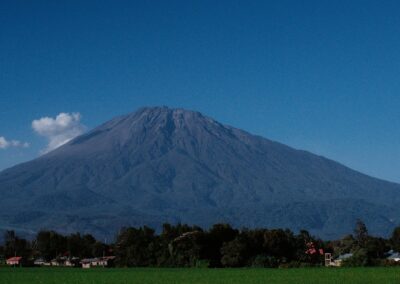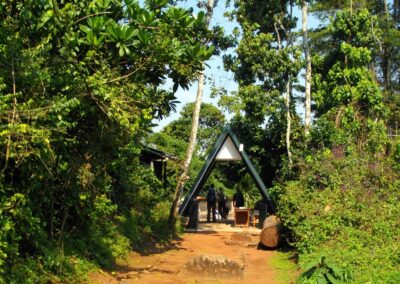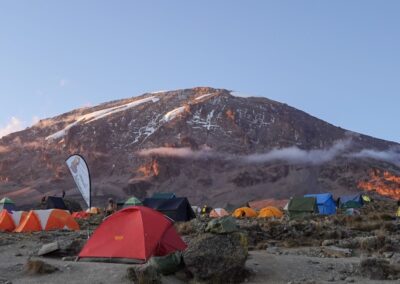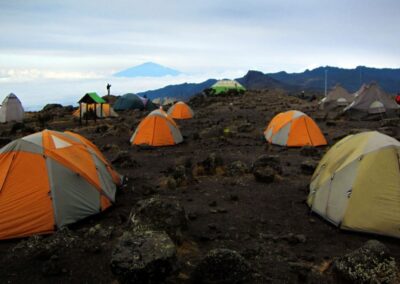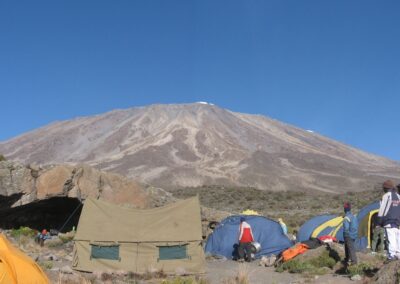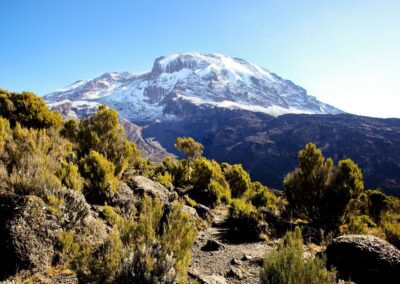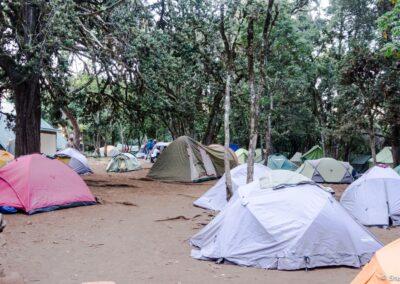Introduction
Overview
Mount Kilimanjaro is situated in northeastern Tanzania close to the Kenyan border with Moshi being the nearest town that serves as the primary gateway to this majestic mountain. As the highest mountain in Africa, Kilimanjaro rises to an impressive height of 5895 meters or 19341 feet above sea level. The trekking experience encompasses five unique climate zones including bushland, rainforest, heath, alpine desert, and an icy arctic landscape, offering adventurers a diverse and breathtaking journey.
Interesting Facts
- The Roof of Africa: Kilimanjaro is often referred to as “The Roof of Africa” due to its towering height and prominence.
- Three Peaks: The mountain has three main volcanic cones: Kibo, Mawenzi, and Shira.
- Snow at the Equator: Despite being near the equator, Kilimanjaro has snow and glaciers at its summit.
- Wildlife: The lower slopes are home to a variety of wildlife, including leopards and elephants.
- First Ascent: The first recorded ascent to the summit was by Hans Meyer and Ludwig Purtscheller in 1889.
Trekking Experience
- Non-Technical Climb: Climbing Kilimanjaro is more of a high-altitude trek than a technical climb, making it accessible to people with no climbing skills.
- Guides Required: Regulations require climbers to ascend with a local guide, contributing to the local economy.
- Preparation: A basic level of fitness is recommended. Regular walks, runs, or hikes will help build the necessary strength and stamina.
Routes
There are several routes to the summit, each offering different experiences and challenges. Some popular routes include:
- Marangu Route: Known as the “Coca-Cola” route, it’s the only route with hut accommodations.
- Machame Route: Also known as the “Whiskey” route, it’s more challenging but offers stunning scenery.
- Lemosho Route: Known for its beautiful landscapes and lower traffic.
Best Time to Climb
The ideal times to embark on your Kilimanjaro adventure are during the dry seasons which offer distinct advantages for climbers. From January to March, you can expect cooler temperatures and less crowded trails, allowing for a more peaceful experience as you ascend the majestic mountain. Alternatively, from June to October, warmer weather prevails, making the climb more comfortable, although you will find a vibrant community of fellow climbers sharing in the excitement of the journey.

